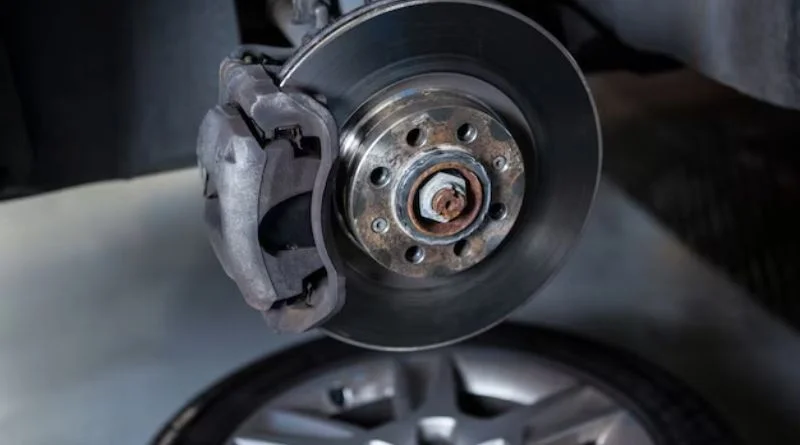How Hydraulic Brakes Ensure Your Safety on the Road
Last updated on July 25th, 2024 at 07:13 am
When it comes to ensuring your safety on the road, hydraulic brakes play a crucial role. These innovative braking systems have evolved over the years, providing durability, performance, and reliability for modern vehicles. In this comprehensive guide, we will explore the ins and outs of hydraulic brakes, understanding their components, how they work, and the advantages they offer. So, fasten your seatbelts and let’s dive into the world of hydraulic brakes!
Understanding Hydraulic Brakes: A Brief Overview
Hydraulic brakes have become the standard in modern vehicles, replacing the older mechanical brake systems. Unlike their mechanical counterparts, hydraulic brakes utilize hydraulic fluid to distribute force and slow down the vehicle effectively. With advancements in technology, hydraulic brakes have gained popularity due to their durability, performance, and enhanced safety features.
The Main Components of Hydraulic Braking System
To fully comprehend how hydraulic brakes work, it’s important to familiarize yourself with their key components. These components work in harmony to ensure efficient braking:
1. Master Cylinder
The master cylinder is the heart of the hydraulic braking system. It converts the mechanical force applied by the brake pedal into hydraulic force. As the brake pedal is pressed, the master cylinder compresses the brake fluid, initiating the braking process.
2. Brake Pedal
Connected to the master cylinder through a mechanical linkage, the brake pedal serves as the interface between the driver and the braking system. When the driver applies pressure to the brake pedal, it transmits the force to the master cylinder, initiating the braking action.
3. Hydraulic Fluid Reservoir
The hydraulic fluid reservoir holds the hydraulic fluid required for the braking system. It is attached to the master cylinder and ensures a constant supply of fluid to the system. Regular maintenance and inspection of the reservoir are essential to ensure optimal brake performance.
4. Hydraulic Lines
Hydraulic lines connect different components of the braking system, delivering hydraulic fluid to the brakes. These lines are responsible for transmitting the hydraulic energy that activates the brakes. Made of durable materials like steel, they ensure the integrity and reliability of the system.
5. Brake Caliper and Drum Cylinder
The brake caliper and drum cylinder are the components responsible for controlling the brakes. The brake caliper is used in disc brakes, typically found in rear wheels, while the drum cylinder is used in drum brakes, commonly found in front wheels. These components exert pressure on the brake pads or shoes, creating friction and slowing down the vehicle.
The Functioning of Hydraulic Brakes
Hydraulic brakes operate based on Pascal’s Law, a fundamental principle of fluid dynamics. According to Pascal’s Law, within a closed hydraulic system, any change in pressure is transmitted equally in all directions. This principle allows hydraulic brakes to generate a high braking force with minimal force applied by the driver.
When the driver presses the brake pedal, the master cylinder compresses the brake fluid. The pressurized fluid is then transferred to the brake calipers or drum cylinders, depending on the type of brake system. The force exerted by the hydraulic fluid causes the brake pads or shoes to engage, creating friction against the brake rotors or drums. This friction slows down the rotational motion of the wheels, eventually bringing the vehicle to a stop.
Advantages of Hydraulic Brakes
Hydraulic brakes offer several advantages over mechanical brakes, making them the preferred choice for modern vehicles. Let’s explore these advantages:
1. Enhanced Safety
One of the primary advantages of hydraulic brakes is their superior safety features. Hydraulic brakes offer quick response times, allowing drivers to stop their vehicles promptly in emergency situations. The hydraulic system ensures equal force distribution to all brakes, preventing skidding and ensuring stability during braking.
2. Durability and Reliability
Hydraulic brakes have fewer moving parts compared to mechanical brakes, reducing wear and tear. This simplicity in design contributes to their durability and reliability, resulting in longer-lasting braking systems. With proper maintenance, hydraulic brakes can provide consistent performance for extended periods.
3. Efficient Energy Conversion
Hydraulic brakes utilize hydraulic energy to convert mechanical force into hydraulic force. This energy conversion enables hydraulic brakes to generate high braking forces with minimal driver input. As a result, less force is required to achieve greater braking output, enhancing the overall efficiency of the braking system.
4. Ease of Maintenance
Maintaining hydraulic brakes is relatively straightforward. With a simple design and fewer components, servicing hydraulic brakes is easier compared to mechanical brakes. Regular inspection of the hydraulic fluid reservoir, brake lines, and brake pads ensures optimal performance and extends the lifespan of the braking system.
Common Issues and Maintenance Tips
While hydraulic brakes are known for their reliability, certain issues may arise over time. Here are some common problems and maintenance tips for hydraulic braking systems:
1. Brake Fluid Leakage
One of the most common issues with hydraulic brakes is brake fluid leakage. To ensure proper functioning, the hydraulic system requires a consistent amount of brake fluid. Small leaks can develop in the connections between cylinders and brake lines. If your brakes are not responding as usual, it is crucial to have the system checked for leaks.
2. Brake Pedal Problems
If your brake pedal feels low or sinks to the floor, it can indicate various issues. While low brake fluid levels can cause this problem, it can also be due to worn brake linings or a worn master cylinder. Adjusting, cleaning, or replacing the shoe adjusters or master cylinder can rectify these issues.
3. Squealing Noises
Squealing noises during braking can be attributed to worn brake pads or vibrations between the caliper and disc pads. Replacing the brake pads or resurfacing the rotors can eliminate these noises and restore smooth braking performance.
4. Pulsating Feedback
If you experience pulsating feedback through the brake pedal, it indicates warped rotors. This issue requires either replacement or resurfacing of the rotors to ensure smooth and even braking.
5. Pulling to One Side
Brakes pulling to one side when the pedal is depressed can be caused by various underlying issues. It may require brake adjustments, wheel lining contamination, or addressing problems with wheel cylinders, calipers, or wheel bearings. Consulting a trained mechanic for diagnosis and repair is recommended.
Conclusion
Hydraulic brakes have revolutionized the automotive industry, providing enhanced safety, durability, and performance. Understanding the components and functioning of hydraulic brakes empowers you to maintain and service vehicles equipped with this braking system. Regular maintenance, prompt repairs, and proper fluid levels ensure optimal brake performance, keeping you safe on the road. So, next time you hit the brakes, remember the power of hydraulic technology working behind the scenes to protect you every time you drive.



